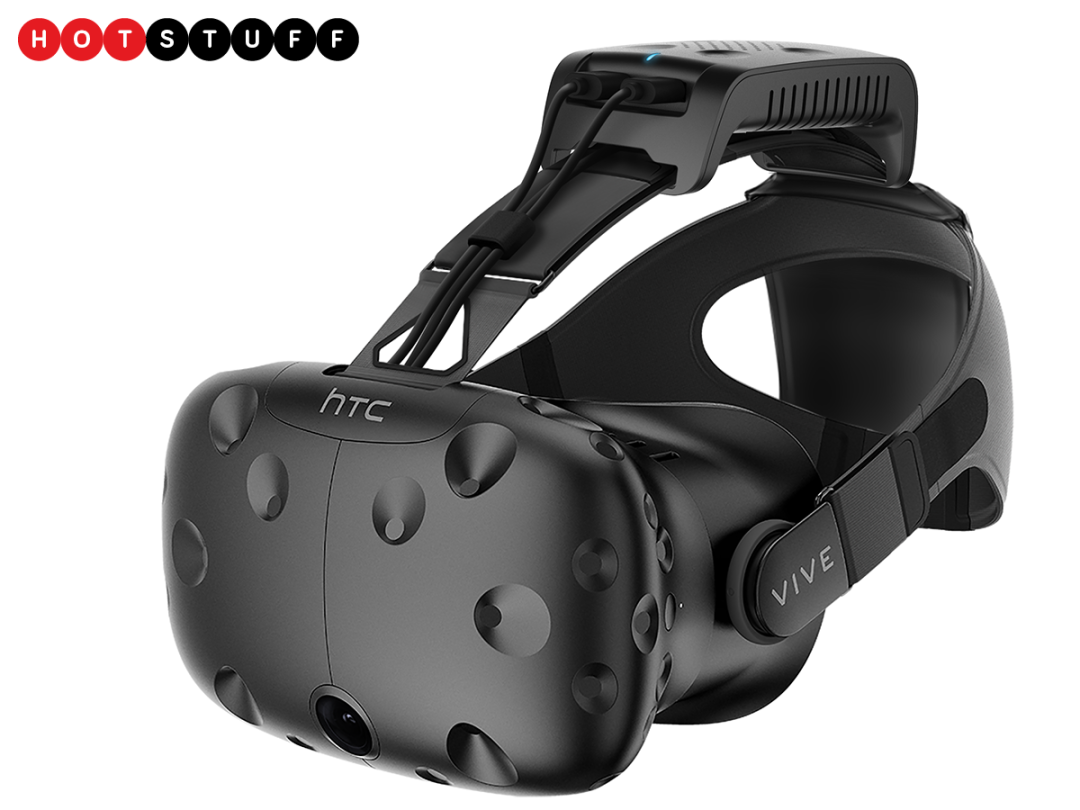This Vive wireless kit sets you free
UPDATED: The TPCast will be out globally in Q2 2017

Lawks, not another VR headset.
Look closer. What’s missing? This is a common-or-garden HTC Vive, albeit with an important addition – a battery powered wireless widget. The Vive, more than Oculus, PS VR and certainly more than any of the smartphone VR headsets, is an encumbrance. The headest itself is large, with several cables coming off the back of it, and you need to cable up two proximity sensors around the room too. Max faff.
And a trip hazard, too.
Well, quite. Now, getting rid of the headset cables is a tricky business because wireless kit often breaks that most fundamental of gaming demands: zero lag. And not just for the usual jump-JUMP-argh-dead reasons, but because of the biological effects of VR. If the perceived enviroment and your movements are not perfectly in sync, that’s when the nausea kicks in. And that’s when you regret wolfing down all those cheese footballs whilst your mate was Vive’ing.

Yuck. But the problem is solved, yes?
So says Chinese startup company TPCast, which has developed the wireless kit as part of HTC’s Vive X accelerator programme. The widget clips on the top there, with a battery pack underneath. It’s good for about an hour and a half of gaming, although the company is developing a larger battery that the user will put in a pocket. That’ll get you a whopping five hours of play.
No pockets on my special VR gamesuit.
Which is why we never accept your invitation to come round. But, should you wish to further liberate yourself, you won’t have to wait too much longer. TPCast’s system was only available via Vive’s Chinese website at first, but now HTC says that it’ll be available globally in Q2 this year, with pre-orders opening up sometime later this quarter.
And you’ll probably want to order as soon as you can: although US$249 (about £200) might seem pretty steep for an attachment for an already-expensive headset that plugs into a surely-pricey PC, the initial Chinese release of the TPCast immediately sold out. Like, in minutes.
We’re not surprised. Removing the constant tug of the cables on the back of your head could make an already amazing VR experience even more immersive. And, it’s a much neater solution than the PC backpacks that were a hastily constructed solution to the problem.
Virtual and actual fingers crossed for that Euro release being sooner in Q2 rather than later.



